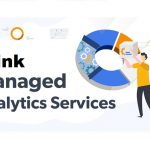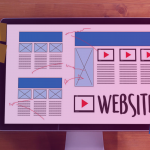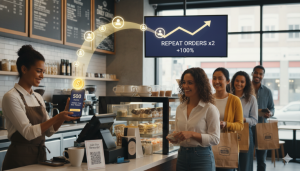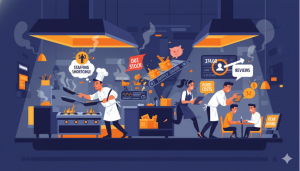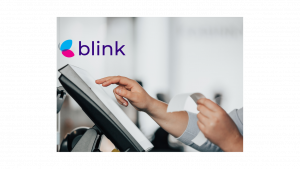It all comes down to metrics for businesses looking to thrive and succeed.
Speaking of metrics and data-driven results, we will be talking about restaurant analytics in this post.
Why are they important?
To start off, you need to double down on the numbers going on through your interactive vendor dashboard. At this point, we are assuming that you have already signed up for an account with a food aggregator, or you have some sort of branded digital food ordering app working in full swing.
The reason for making such an assumption is because aggregator apps, or food service apps have a dedicated dashboard where restaurant owners can log in. You can get a full view of your customers’ analytics data, sales history, order tracking details, and vice versa.
Beyond that, restaurant analytics is about forecasting reports and projecting sales trends related to different sections of your online food order menu. There’s a lot of wiggle room for experimentation and settings to tinker with. So, yeah, when we talk about restaurant analytics, it comes down to actionable insights that will help you to execute your next big strategy.
What Are Restaurant Analytics?
78% of restaurant owners monitor their company data on a daily basis, but what does this actually indicate for their businesses??
Restaurant reporting and restaurant analytics are two different things.
A brief and focused period of time is all that’s required for restaurant reporting. Sales and earnings can be compared between today and last week, or between yesterday and today, with the help of the reporting process.
In other words, it’s just a data dump of the day’s events, with little thought given to what could be derived from it.
Customer analytics for restaurants goes a step farther and forces you to ask, “Why?”, “So now what?” and “What does this mean?” In order to have a clearer picture of your restaurant’s performance, restaurant analytics generally aggregates data from several sources. To find out why a certain day of the week or a specific time period is profitable, look to your restaurant’s data.
Using this information, you can learn how to improve your restaurant’s overall operations.
Examples of restaurant customer information include:
- Identify each returning guest by name.
- Contact information (phone, email, and home address) Send them news and updates and thank them for their business.
- Birthdays: Who doesn’t like to be reminded of their birthday?
- Food allergies – Knowing what ingredients to avoid will help your chef.
- Favorite foods – Knowing this aids servers in making individualized suggestions.
Here’s the important question though…
How Can Restaurants Track Guest Data?
Data generated by restaurants is a gold mine that can be exploited for the benefit of a restaurant’s business, as was previously said. What technologies can restaurants employ to gather and organize this data to be examined and used for decision-making?
As digitization has grown, there has been an increase in the number of systems that help businesses with restaurant analytics.
There are still ways to keep track of your guests using pen and paper, but they will only get you so far.
To better understand the overall performance of a business through data-driven decision-making, restaurants can use advanced online tools like reservation systems to gather detailed customer analytics for restaurants, including personal details like preferences or allergies, along with various restaurant performance analytics, customer breakdowns, and more.
Restaurants’ point-of-sale (POS) systems are yet another excellent data source. The POS can help you keep track of things like average ticket size per customer, the most popular dishes, and more.
Some reservation systems allow you to link your POS to your reservation system, providing access to more comprehensive data in one location.
What If You Don’t Have Access to Restaurant Analytics Data?
Well, that’s a bummer.
Depending on your food aggregator partner, you should have access to your customer analytics data. If you don’t have access, ask for it. Period.
Sometimes, aggregators do not give full control of the restaurant admin dashboard. Some of the functions, or data is restricted for security measures, or it could simply be due to the fact that the aggregator just doesn’t want you to interact directly with your customers. In other words, as long as you have to depend on the aggregator, you will keep coming back for more.
In a way, your aggregator is manipulating you. However, we do have a solution to this dilemma.
To set you up with direct access to restaurant analytics data, and much more, sign up for a Blink account.
Here’s what’s in store for you:
Any existing restaurant owner, or food startup, can easily sign up on a month to month basis for a fully-fledged virtual account that offers the following benefits:
- A white-labeled back and front end with tools specific to your restaurant’s operational agenda.
- Customized menu system to help create multiple menus within 5 – 10 minutes.
- Flexible payment options for your online restaurant customers.
- Marketing campaigns, discount deals, and other perks to kick your name-brand presence in no time.
- Customizable menu items.
- The dedicated mobile experience for your restaurant customers and food delivery agents.
- Exclusive insight on powerful marketing data, customer analytics, buying trends, and user reports for laser-sharp target-oriented results.
… and about a bazillion more perks that food businesses are known for reportedly enjoying with Blink Co. More details are available on the ‘Blink for Restaurants’ webpage.
So how does the restaurant analytics part work with a Blink Co restaurant manager account? It’s simple. You get access to everything related to your individual customer’s order history, combined reports, sales trends, and specifics on how well your menu is performing at the front end.
Blink also gives you the full liberty to use your customers’ contact information for SMS, Email, and other forms of automated marketing. Alternatively, you can give the company reps the go-ahead to execute marketing campaigns on your behalf, for a small fee of course..
[INSERT_ELEMENTOR id=”2061″]
4 Innovative Ways to Dive Into Restaurant Analytics:
For maximum conversion, here are some of the best ways to use restaurant analytics to your advantage.
1. Figure Out Your Sales & Inventory:
Depending on your sales category, some items on your online food order menu will sell faster than others.
As a result, inventory will deplete. Likewise, there’s a high chance that theft, spillage, waste, and expiry will cause your stock to take a hit when you are least expecting it.
Restaurant analytics, in that sense, is not all about keeping a watch on profits’ side. With a powerful analytics system in place, you will have full access to your inventory status. Likewise, a high volume of sales will also indicate the popularity of select food items.
This way, you can play with profits by slightly increasing the price of your popular dishes. Notice how the customers’ sales trend reacts to the increase in price, and adjust accordingly.
2. Restaurant Analytics for Menu Engineering:
Menu engineering is a very important issue that we have talked about in our previous blog posts. Oftentimes, there are moments when you don’t know whether a select area of your menu is performing well, or not generating enough sales.
The data relating to menu engineering comes from sales numbers on specific food order menu items. It is time for you to double down on those reports and see which menu items are selling low. Doing so will identify the weak points of your menu.
You can then, tweak the price, merge that menu item with combi deals to upsell and do lots of other things. From a strategic point of view, restaurant analytics on food order menu sales also enables business owners to completely eliminate a low-selling item for good.
3. Get a Breakdown of Location Wide Data
If you are in command of multiple restaurant branches, then you already know that not all branches perform the same way.
Depending on the branch location, and the vicinity it is operating in, you can upscale accordingly.
Restaurant analytics shed insight on your patrons’ interaction with any given branch. See year over year data to pinpoint any weaknesses, or strengths to make an informed decision towards business continuity. On a macro level, you can shut down an underperforming branch, or merge it with some other business to minimize your loss.
[INSERT_ELEMENTOR id=”2061″]
4. Incentivize Through Pos Sales Data:
Did you know that pos software for restaurants can be used to identify sales numbers? More importantly, these programs are a great way of tracking your servers’ performance. If a server, in particular, is actively engaged in bringing in more customers, it is time to reward him for his performance.
Likewise, underperforming servers can be offered incentives, since you have direct access to restaurant analytics data through pos software back end. Employees feel motivated when they are rewarded for their efforts. Give them a day off; offer discount vouchers or free meals on the house. Just make your employees/ servers feel appreciated for their efforts and they will continue to play an integral role in your restaurant analytics datasheets.
To get the most value out of your restaurant analytics data, feel free to contact Blink Co. reps. You can also book a demo to see how your company can take full advantage of some of the best digital solutions for online restaurants in the industry.







